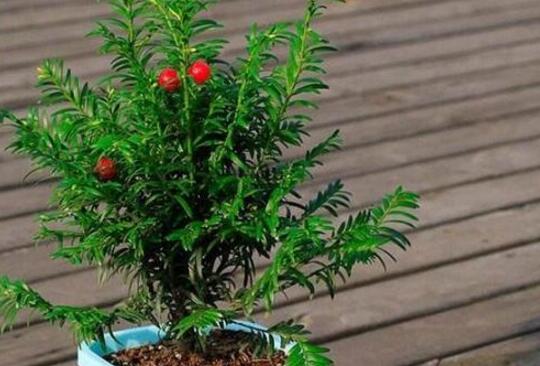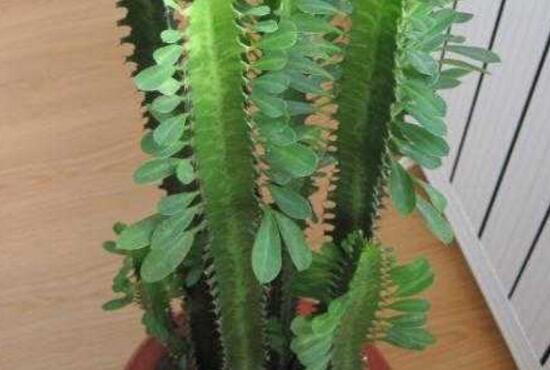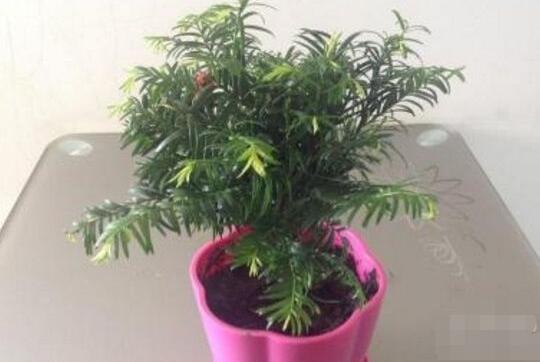How to water the yew, dry and wet / Rain Water is the most suitable / tap water should be kept quiet for 1-2 days
Although the yew has strong adaptability, the soil with high alkalinity will affect its growth, so when watering, the selected water quality, watering times and so on are all very important, and this is also the most important point in the yew culture method. not only to achieve no shortage of water but also to avoid waterlogging, so how to water the yew? The editor came to tell you how to water the yew.
Why should the yew be watered?
1. Rain Water / River Water / well Water

Generally speaking, Rain Water is the most suitable water quality for watering yew, but Rain Water doesn't always have it, so you can use a container to collect some when it rains. Secondly, we can also use clean river or lake water, and some flower friends will use well water, but the editor should remind flower friends in the north that the alkalinity of well water in the north is relatively high, which is not conducive to the growth of yew, and should be used with caution.
2. Tap water
In particular, it is not easy for most flower lovers who grow yew to get clean river water, so they are usually watered with tap water. Here is a tip: it is best to place tap water in containers for 1-2 days. Some of the gases or substances harmful to the yew can be filtered out, so that watering will not cause physiological wilting.
How to water the yew
1. Spring watering
In spring, the yew is usually watered once every 2-3 days, but there is no strict limit on the watering time. The principle is to keep the soil moist, do not allow stagnant water in the soil, and stop watering thoroughly each time.
2. Summer watering
When the temperature is high, it takes 1-2 days to water, and watering is best done in the morning. If the soil is found to be relatively dry at noon or in the afternoon, you can spray water around the plant with a kettle in the evening, which can not only play a cooling role, but also allow excess water to flow into the soil and be absorbed by the roots.
3. Watering in autumn
The temperature will gradually decrease in autumn, so watering will gradually decrease, how to water the yew at this time? Generally 3-4 days can be watered once, if there are more Rain Water, can be watered once a week, the principle is not to let the soil dry too much.
4. Watering in winter
Basically there is little watering in winter, but you can't stop watering the yew at all. You can wash the leaves with water every half a month to keep them clean and tidy. In addition, we also need to pay attention to the water temperature, at least to ensure that the water temperature above 5 degrees is more appropriate, the water temperature is too low may hurt the leaves and the trunk.
Matters needing attention in watering yew
Because the yew likes a humid environment, but is afraid of stagnant water, the selection of soil must be well drained, so as to ensure that when there are more Rain Water, the water can be discharged as soon as possible to avoid root soaking in the water and rot. When the leaves turn purple-green in winter, watering can be stopped after being watered thoroughly, and the yew can be watered in advance in early spring, allowing the yew to recover and restore growth as soon as possible.
How to water the yew
Watering method of Taxus chinensis
During the growing period of the yew, sufficient water is needed. At this time, it is necessary to water more and less during the winter dormant period, because the growth of the plant is basically stagnant and the water absorption capacity decreases. Spring and autumn season generally about 7 days a foot water, summer 2-3 days or so watering, in addition to watering, but also often spray the leaves, especially when the summer temperature is high.
The leaf color of Taxus chinensis var. mairei is not correct due to water shortage.
Under normal circumstances, the color of yew leaves is shiny and bright, if you find that the leaves are dull and dispirited, you need to replenish water. When the leaf surface is drooping, it indicates an extreme lack of water.
The color and sound of the potted soil are not right.
If it is found that the potted soil turns pale and lighter, it shows that the yew is short of water. Knock on the flowerpot and make an empty sound, indicating that the soil is dry and needs watering.
Matters needing attention in watering Taxus
During the dormant period in winter, watering should be based on the principle of dry rather than wet. The watering temperature should be similar to the ambient temperature and the temperature difference should not be too large. Never water too much, it will lead to rotting roots.
How to raise yew, how to cultivate yew and matters needing attention / avoid strong light and waterlogging
We know that the efficacy and function of the yew is very many, and it is also a very valuable potted plant. If the breeding technique is improper, it is not only easy to cause the plant to wither and die, but also may bring economic losses to the flower friends. So how to raise the yew? Today we will learn more about the culture methods and matters needing attention of Taxus chinensis.
Growth habits of Taxus mairei
Before we know how to raise the yew, we can familiarize ourselves with its growth habits. Taxus is a shade-loving plant, it needs a certain amount of light, but not too strong. The ability to withstand drought is relatively strong, so you don't need to water too often. At the same time, it has outstanding cold resistance, so it can also be planted in the north.
Culture methods and matters needing attention of Taxus mairei
First, how to raise the yew
1. Soil requirements
The yew's requirements for soil are loose, fertile, breathable and well drained, so clay should not be used in breeding, because its air permeability is relatively poor, and the most suitable soil is a mixture of peat soil, perlite, loam and so on. Garden soil, peat and sand can also be configured in the proportion of 50%, 25% and 25%, in which 1% mature organic fertilizer is best added.
2. Lighting conditions
Taxus is a shade-loving plant, but it can not grow without light, otherwise it will grow slowly and have few leaves. The correct light should be enough light for 4 hours a day, shade protection should be done in summer, and light time can be increased appropriately in spring and autumn, but avoid being exposed to direct sunlight when the sun is strong at noon.
3. Suitable temperature
The cold tolerance of Taxus chinensis is very strong, it can survive in the low temperature of 15 ℃, and it can also grow in the environment of 32 degrees, but the most suitable temperature is 20-30 ℃, so it may be in the slow growth stage for half a year every year, and the suitable growth period is from March to November, of which April to October is the most vigorous period.
4. Watering skills
In the yew culture methods and matters needing attention, watering is a very important link, because the yew is resistant to drought and afraid of waterlogging, so watering can neither be too much nor too little. Generally, water can be watered once every 3 days in spring and once in the morning and evening in summer. Watering can be done with a spray can with fine holes, which can not only wash leaves but also increase humidity.
The frequency of watering in autumn is usually once every 3-4 days. When the temperature is low in winter, you should reduce watering, spray some water to the leaves every 15 days or so, and let the excess water flow into the moist soil in the flowerpot. If it is in the rainy season, it is necessary to postpone watering and do a good job of drainage and waterlogging prevention.
5. Fertilization method
Before planting, base fertilizer can be applied to the soil, which can be replaced by rotten organic fertilizer or rotten livestock manure. Nitrogen, phosphorus and potassium fertilizer needs to be applied during the growing period, the amount of nitrogen, phosphorus and potassium fertilizer is 100-200 grams per plant, and timely watering is needed after fertilization, which can make the fertilizer concentration reach an appropriate range and help the yew to absorb nutrients.
Matters needing attention in cultivating Taxus chinensis
1. Don't apply too much fertilizer.
Taxus is a plant whose life is very inflated but grows slowly, so fertilizer should mainly be slow, and the concentration and use of fertilizer must not be too much, otherwise it is easy to cause fertilizer damage, which will lead to yellowing and curling of leaves, which is harmful to the health of Taxus chinensis.
2. Avoid stagnant water in watering
Under normal circumstances, it is suitable to give the yew good and even dark water quality, preferably Rain Water, followed by groundwater, river, and so on, so we can take some Rain Water for backup when it rains, and if we use tap water to irrigate, then it is best if some alum fertilizer water is used, it can control the pH of the soil and avoid affecting the growth of the yew because the soil alkalinity is too high.
3. Timely pruning
Although the growth of the yew is not fast, it still needs pruning in time in order to ensure its beauty. Some flower friends often say that pruning is easy to be ignored in the breeding methods and matters needing attention of the yew. In fact, pruning can promote the germination of new branches. It is also conducive to the growth of yew, which is a very useful conservation technique.
The branches should be cut off from the base when pruning. After seeing, it is best to use charcoal, plant ash to smear the wound to play the role of sterilization, to avoid wound decay. During extensive pruning in summer, some carbendazim can be sprayed to prevent wound infection and reduce the occurrence of diseases and insect pests.
4. Scientific reproduction
In general, when breeding yew, sowing and cutting will be used. Sowing can choose autumn sowing in October or spring sowing in March. Cutting can be carried out in May. After breeding, attention should be paid to moist soil, semi-shady ventilation of the environment, and correct maintenance in order to improve the success rate of reproduction.
- Prev

How to trim the keel flower, the pruning method of the keel flower diagram / cut off the top to control the height
Dragon bone flower is very effective, it is not only good-looking, but also can purify indoor air, more importantly, it has good medicinal value, so it is very important to raise dragon bone flower well. However, when raising keel flowers indoors, it is not easy to raise keel flowers, especially for pruning, which makes it more ornamental and ugly.
- Next

What kind of fertilizer is good for Taxus, and how to fertilize / attach fertilization skills?
Scientific research has found that different fertilizers have different effects on 1-2-year-old Taxus mairei, for example, the contents of nitrogen, phosphorus and potassium will affect the number of branches and leaves and the content of taxol, so fertilization is very important in the culture method of Taxus chinensis.
Related
- Fuxing push coffee new agricultural production and marketing class: lack of small-scale processing plants
- Jujube rice field leisure farm deep ploughing Yilan for five years to create a space for organic food and play
- Nongyu Farm-A trial of organic papaya for brave women with advanced technology
- Four points for attention in the prevention and control of diseases and insect pests of edible fungi
- How to add nutrient solution to Edible Fungi
- Is there any good way to control edible fungus mites?
- Open Inoculation Technology of Edible Fungi
- Is there any clever way to use fertilizer for edible fungus in winter?
- What agents are used to kill the pathogens of edible fungi in the mushroom shed?
- Rapid drying of Edible Fungi

